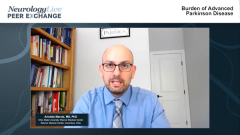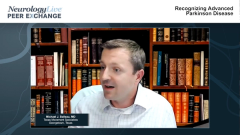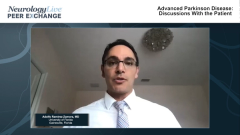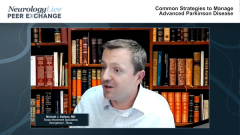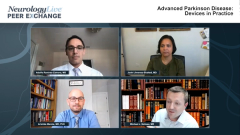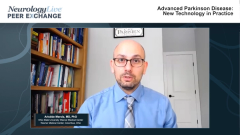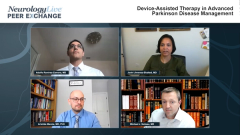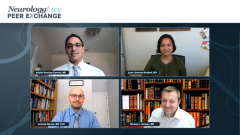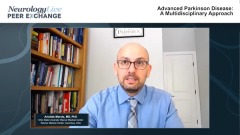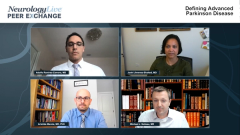
Advanced Parkinson Disease: A Multidisciplinary Approach
A discussion about the benefits of a multidisciplinary evaluation for patients with advanced Parkinson disease who are potential candidates for device-assisted therapy.
Episodes in this series

Adolfo Ramirez-Zamora, MD: Ari, would you comment a bit on the importance of a multidisciplinary evaluation and approach in patients who are considering some of these therapies, particularly DBS [deep brain stimulation]? I would love to hear your thoughts about carbidopa/levodopa or gastrointestinal levodopa infusions. Do you have a multidisciplinary approach as well? And why is that important specifically for DBS?
Aristide Merola, MD, PhD: The more I think about advanced therapies, if I want to define them, the main aspect is that it requires an advanced theme in terms of different competencies. Each one of the players on this multidisciplinary team has to be very skilled in treating patients with Parkinson disease. For instance, we published an article a couple of years ago in which we evaluated the improvement in quality of life after deep brain stimulation in patients with and without orthostatic hypotension.
It turned out that patients with PD [Parkinson disease] and orthostatic hypotension had an improvement in quality of life that was 3 times less than those without orthostatic hypotension. Why? Because the patient selection was probably not the best. We were treating with deep brain stimulation, for symptoms and motor fluctuations, but we weren’t considering how much the motor fluctuations were actually the main determinant of disability in that patient. So, it’s critical that you have a good neurologist to evaluate exactly which symptoms are present in that individual patient, and which of those symptoms are the ones creating disability. For instance, if we have a patient that has some cognitive impairment, some orthostatic hypotension, a lot of hallucinations, and a little bit of motor fluctuation, maybe motor fluctuations are not really the main determinant of disability, and so we should treat the other symptoms first. Of course, the neurologist can have a vision of the entire complexity of the situation. But as neurologists, we also need to rely on neuropsychologists with experience in these treatments.
When it comes to the selection of the surgical target, we know that the subthalamic nucleus is only 8 mm long, and we know there is 1 motor part, 1 associative part, and 1 limbic part. So, what is the risk we can create dysregulation of the limbic part or the associative part in certain individuals? It can be relatively high, so we need to know what the baselines are of these patients, and we need to understand whether there is a risk. And maybe if there is a risk, we can go with a different target. We can go for the globus pallidus pars interna.
Then, of course, there is the skill of the surgeon. It is important that the surgeon is experienced in what he does. But sometimes neurosurgeons ask me, “Oh, do you really think it’s important to have a neurologist? Maybe patients can just be referred to a neurosurgeon; the neurosurgeon can do the surgery.” I say, of course. I have no doubt they can do an excellent surgery, but maybe they are not getting all of the nuances that can help them to do an even better surgery.
That’s why having a multidisciplinary approach is so important, and that’s also why having centers that have good members is very important. It’s important to have at least a few cases every month. Centers doing only 1 deep brain stimulation per month probably don’t have the network of communication that is really efficient. They probably don’t have all of the experience needed to have great surgical outcomes. And we need to consider that the rate of surgical revisions in patients with deep brain stimulation ranges from 3% in experienced centers to up to 15% in centers with less experience. Of course, patients undergoing brain surgery don’t want to do it another time. I’m sure Joohi and Michael also have other points to make.
Adolfo Ramirez-Zamora, MD: Michael, do you want to comment on that?
Michael J. Soileau, MD: I think that’s right. It takes a village to truly treat these patients. I think when we’re asking our colleagues on the multidisciplinary team their opinions—for example, neuropsychometric testing, social work, physical therapy, occupational therapy, GI [gastroenterology], IR [interventional radiology], whatever the case may be—it’s really to help us “quarterback” the decisions that are made for these patients and making sure we have all the data we need to do the best thing for them, and making sure they have social support at home and can deal with some of the things that come hand in hand with advanced therapies. Why? Well, it’s all for their success because we want to see them succeed with this therapy, whatever that therapy is. It truly does take a village, and if we try to do all of those things ourselves, not only can we not do that [effectively] but we would also get burnout as providers. We have to rely on peers and colleagues to help us treat these patients. It’s the best practice in my opinion.
Adolfo Ramirez-Zamora, MD: Thank you all for watching this Neurology Live® Peer Exchange. If you enjoyed the content, please subscribe to our e-newsletter to receive upcoming Peer Exchanges and other great content right in your in-box. Thank you so much.
Transcript Edited for Clarity
Newsletter
Keep your finger on the pulse of neurology—subscribe to NeurologyLive for expert interviews, new data, and breakthrough treatment updates.

